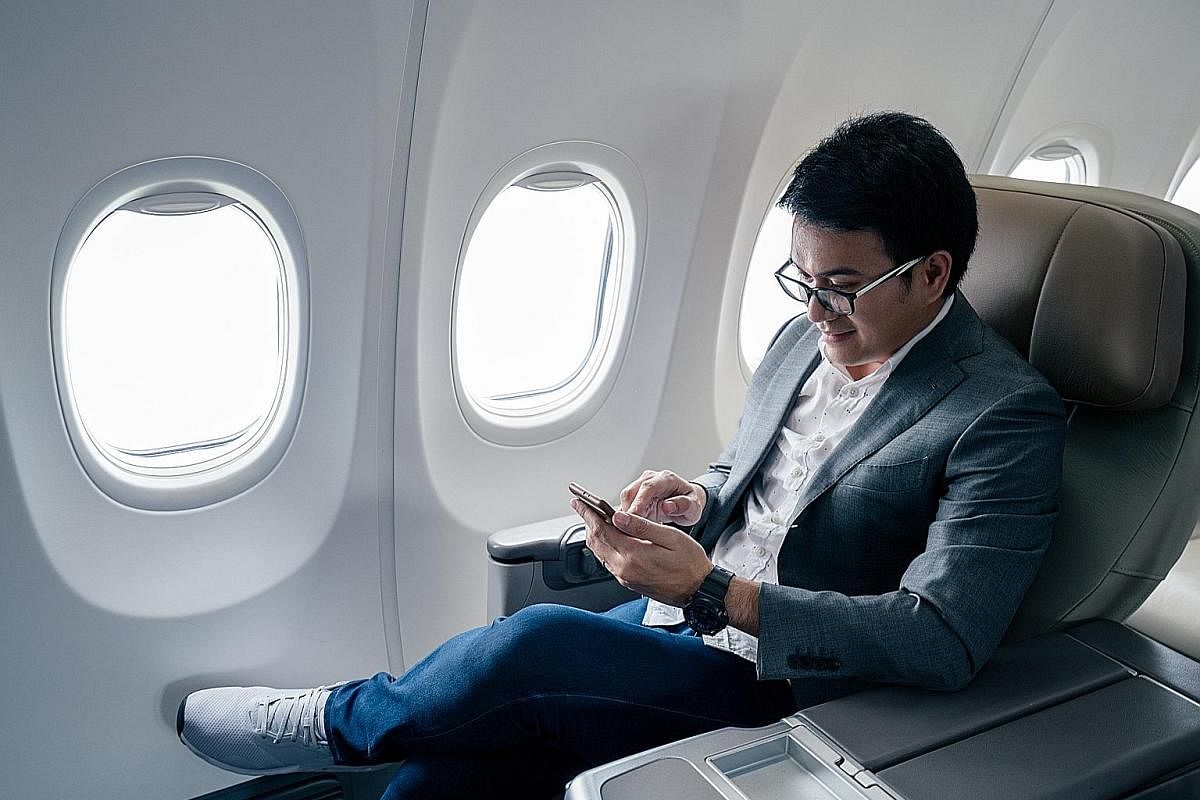Stream as you fly
A recent study shows more airlines are offering in-flight Internet and the quality of the Wi-Fi connection is improving, allowing full Web browsing and limited media streaming

Wi-Fi during a flight used to be a luxury - not every flight had it and, on those that did, speeds were slow and access pricey.
Yet, with improving technology and an increase in the number of long-haul flights, most major airlines now offer in-flight Wi-Fi.
Indeed, Internet access was available onboard Singapore Airlines' (SIA) inaugural non-stop 19-hour flight between Singapore and New York that took off last week. It is the world's longest commercial flight.
According to a study by digital flight shopping company Routehappy that was published earlier this year, 82 airlines now have in-flight Internet - which is a 17 per cent increase from 70 last year - and speeds are getting better.
What Routehappy describes as "better Wi-Fi" - connections that support full Web browsing and limited media streaming - now make up more than 50 per cent of available in-flight Internet services.
"Basic Wi-Fi" - connections that allow for basic Web browsing, but do not support streaming on Spotify or Netflix - now make up less than 30 per cent of available in-flight Internet services.
Delta Air Lines, American Airlines and Emirates are the carriers that offer the most available seat miles (ASMs) with Wi-Fi. The ASM is a standard industry measure obtained by multiplying the number of seats available by the distance flown. SIA was ranked 12th.
Airlines from the United States are ahead in terms of Wi-Fi connectivity as they offer Wi-Fi on 85 per cent of ASMs, Routehappy found. Non-US airlines have only a 32 per cent chance of being connected.
But having a high ASM with Wi-Fi score does not guarantee there is a Wi-Fi connection on a flight with these airlines.
Routehappy found that only Icelandair, Southwest Airlines and Virgin Atlantic have 100 per cent of their aircraft outfitted with Wi-Fi.
The report added that Wi-Fi is becoming a necessity to compete in the air travel market, as the service is no longer seen as being available only on large global airlines. Smaller airlines have begun offering Wi-Fi too.
"Air Astana from Kazakhstan, Air Cote d'Ivoire from Ivory Coast and Air Mauritius from Mauritius are just a few of the many smaller airlines that began offering Wi-Fi in 2017," said the report.
"These airlines view Wi-Fi as a necessary amenity to better compete with larger airlines."
But how does Wi-Fi in a plane work? There are now two operating systems for Wi-Fi in planes: ground-based and satellite.
Ground-based Wi-Fi in planes work similarly to mobile-phone connections by linking up with cell towers. Planes using this system have an antennae or receiver located under the aircraft body that links up with cell towers which they pass, on a rolling basis.
But this works only for planes that fly over land. Should a plane fly over large bodies of water, as is the case for many long-haul flights, the satellite Wi-Fi system is used instead.
This method involves connecting passengers to the Internet via a network of orbiting satellites.
There is an antennae or receiver at the top of the plane's main body that connects to these satellites, which are linked to ground stations that open the doors of the digital world for passengers.
Join ST's Telegram channel and get the latest breaking news delivered to you.
A version of this article appeared in the print edition of The Sunday Times on October 14, 2018, with the headline Stream as you fly. Subscribe

